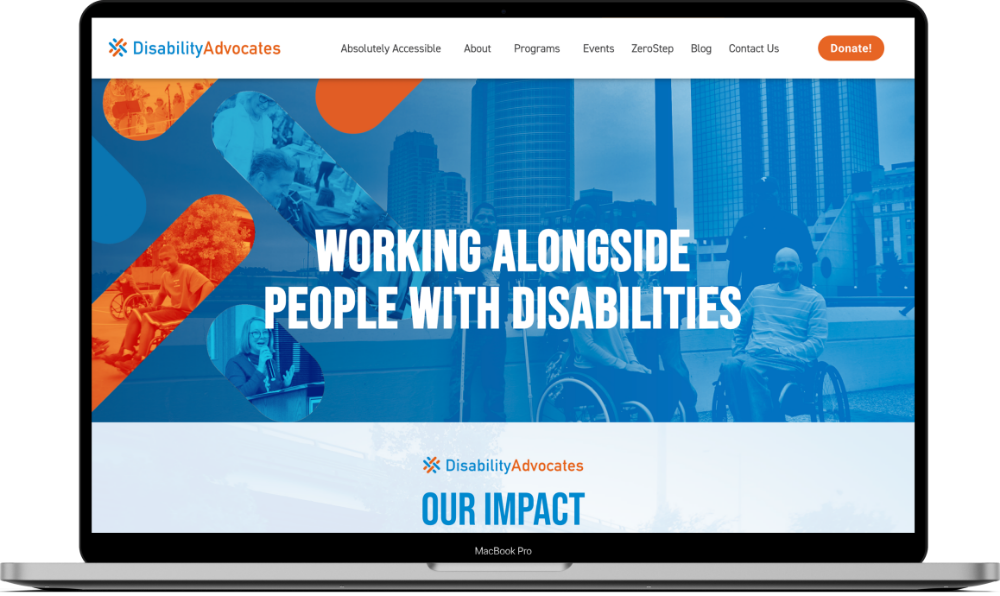
More Than Just Marketing.
Your healthcare and medical practice needs more than just simple strategy.
At JSL, we go beyond basic marketing and web design solutions. We craft tailored strategies that prioritize your practice’s unique goals, ensuring your digital presence resonates with your patients. From increasing visibility to enhancing patient trust, our comprehensive services are designed to grow and support your practice at every level.

Why JSL is the Right Fit for Your Healthcare and Medical Practice
At JSL, we specialize in creating tailored marketing strategies and website designs that meet the needs of healthcare professionals.
Whether you’re focused on attracting new patients, improving communication with existing ones, or enhancing your online credibility, JSL is here to help. Our team of experts knows the importance of security, privacy, and accessibility in healthcare, and we are committed to delivering solutions that align with your practice’s goals and regulations.
- Wealth of knowledge and experience in the field
- A tried, tested, and true project management system
- Unmatched client service and support
- Awareness of security, privacy, and accessibility needs
- We are an all-in-one, full service marketing agency

A History of Unmatched Quality
In today’s digital world, a website is essential for healthcare providers to build trust, reach new patients, and streamline communication.
It’s more than just an online presence—it’s an opportunity to showcase your expertise, provide important resources, and improve patient engagement. Whether you’re a solo practitioner or part of a larger group, your website should work for you. Explore our portfolio and see how we’ve helped healthcare professionals like you establish a strong online identity.
What Makes an Effective Healthcare and Medical Practice Digital Marketing Strategy?
User Research and Analysis in Healthcare And Medical Website Design
Importance of Understanding the Audience
To design an effective healthcare website, understanding the target audience is essential. This involves gathering detailed demographic information about patients, including their age, health conditions, technology usage, and specific needs when accessing healthcare services online.
For instance, older patients may require simpler navigation and larger text sizes, while younger users might prioritize mobile accessibility and quick appointment booking.
Methods of Conducting User Research
User research should be comprehensive, utilizing methods like surveys, focus groups, and usability testing. Surveys can gather quantitative data on user preferences, while focus groups provide qualitative insights into user behavior and expectations. Usability testing with real users helps identify pain points in the website’s design and navigation, ensuring that the final product is user-friendly and meets the needs of all patient demographics.
Testing and Continuous Improvement
Importance of Ongoing Testing
Regular testing is essential to ensure that a healthcare website remains functional, user-friendly, and secure. This includes usability testing to assess how easily users can navigate the site, performance testing to ensure the site loads quickly, and security testing to identify and address vulnerabilities. Continuous testing helps catch issues early, ensuring that the website remains a reliable resource for patients.
Strategies for Continuous Improvement
Continuous improvement involves regularly updating the website’s content, design, and functionality based on user feedback, analytics, and changes in healthcare practices or technology. For example, if analytics show that users frequently drop off at a certain point in the appointment booking process, the design or instructions may need to be adjusted to improve completion rates. By staying proactive and responsive to user needs, healthcare websites can remain relevant, effective, and user-friendly over time.
Integration of Appointment Booking Systems
Streamlining the Appointment Process
An integrated appointment booking system is essential for any healthcare website. This system should allow patients to book, reschedule, or cancel appointments with ease. Integration with the healthcare provider’s internal scheduling system is crucial to ensure real-time availability and to avoid double bookings. For example, the system might allow patients to choose their preferred provider, time slot, and type of appointment (e.g., in-person or telehealth).
Enhancing User Experience with Online Booking
The appointment booking system should be designed with the user in mind, offering features like appointment reminders via email or SMS, clear instructions throughout the booking process, and easy access to the patient’s appointment history. Additionally, providing options for patients to book follow-up appointments or view appointment instructions can enhance the overall user experience, reducing no-show rates and improving patient satisfaction.
Defining Goals and Objectives
Setting Clear Website Goals
The goals of a healthcare website must be explicitly defined to guide the design process. These goals could include increasing patient engagement, reducing no-show rates through effective appointment reminders, or providing easy access to telemedicine services. Clear goals ensure that every aspect of the website supports the healthcare provider’s objectives, whether it’s improving patient satisfaction, streamlining administrative tasks, or enhancing the provider’s online presence.
Aligning Objectives with User Needs
The website’s objectives must be closely aligned with the needs of its users. For example, if one of the primary goals is to reduce the number of phone calls for appointment bookings, the website should feature an intuitive and easily accessible online booking system. By aligning the website’s functionality with user expectations, healthcare providers can improve user satisfaction and achieve their organizational goals more effectively.
Clear Navigation and Information Architecture
Designing Intuitive Navigation
Effective navigation is crucial for helping users find information quickly on a healthcare website. This involves structuring the site with a logical menu, using clear and descriptive labels, and organizing content into easily accessible categories. For example, important sections like “Patient Services,” “Find a Doctor,” and “Make an Appointment” should be prominently featured in the main navigation menu to guide users efficiently.
Organizing Content for Easy Access
Information architecture goes beyond just the menu; it involves the overall layout and structure of the content. A well-organized site might use a “mega menu” to display all major sections at a glance, allowing users to navigate directly to the content they need. Additionally, implementing search functionality with filters can help users quickly find specific services, conditions, or healthcare providers, enhancing the overall user experience.
Content Strategy and Management
Developing Relevant and Engaging Content
Content is critical for educating patients, providing healthcare information, and establishing the healthcare provider’s authority. This includes not only static pages like “About Us” and “Services” but also dynamic content like blogs, patient testimonials, and video tutorials. For example, a healthcare website might include a blog with articles on health tips, treatment options, and the latest medical advancements, all aimed at educating patients and improving their health outcomes.
Managing Content for Consistency and Accuracy
Content management is essential for keeping the website’s information current and accurate. This involves regular reviews of all content to ensure it reflects the latest medical guidelines and practices. For healthcare websites, this might include regularly updating the list of available services, revising doctor profiles, and ensuring that all contact information is correct. A content management system (CMS) can help streamline these updates, allowing healthcare providers to keep their site fresh and relevant.
Security and Privacy Considerations
Protecting Patient Information
Security and privacy are paramount in healthcare website design, especially when handling sensitive patient data. The website must adhere to regulations such as HIPAA, which mandates strict standards for the protection of health information. This includes implementing SSL encryption, secure login processes, and regular security audits to ensure that patient data is protected from unauthorized access.
Building Trust Through Security
In addition to technical security measures, the website should communicate its commitment to patient privacy and security through clear, accessible privacy policies. These policies should outline how patient data is collected, used, and protected. For example, providing a dedicated page that explains the website’s security features and data protection measures can build trust with users, encouraging them to engage more fully with the site’s services.
Responsive Design and Mobile Optimization
Importance of Mobile Optimization
Given that over 50% of web traffic comes from mobile devices, mobile optimization is critical for healthcare websites. A responsive design ensures that the website’s layout, images, and text adapt smoothly to different screen sizes, providing a consistent user experience. For healthcare providers, this is particularly important as patients increasingly use mobile devices to search for medical information, book appointments, and access healthcare services on the go.
Implementing Responsive Design
Responsive design involves more than just resizing elements; it requires a thoughtful approach to ensure that navigation remains intuitive and that all interactive elements function properly across devices. This might include optimizing forms for touch input, ensuring that buttons are large enough to tap easily, and reducing load times by compressing images. Regular testing on various devices and operating systems is necessary to identify and fix any issues that could hinder the mobile user experience.
Visual Design and Branding
Establishing a Cohesive Brand Identity
Visual design is a powerful tool for establishing and reinforcing a healthcare organization’s brand identity. This includes selecting a color scheme that reflects the brand’s values, using consistent fonts across the site, and incorporating the organization’s logo prominently. For example, a pediatric clinic might use bright, cheerful colors and playful fonts, while a cardiology practice might choose a more subdued, professional palette to convey trust and expertise.
Enhancing User Experience Through Design
In addition to aesthetics, visual design must enhance the user experience by guiding users through the site. This can be achieved by using visual hierarchy, such as placing the most important information at the top of the page and using larger fonts for headings. Interactive elements like buttons and links should be designed to stand out, encouraging users to take desired actions, such as booking an appointment or signing up for a newsletter.
Accessible Design for All Users
Ensuring Accessibility for Diverse Audiences
Healthcare websites must be accessible to all users, including those with disabilities. This requires designing for screen readers, providing alt text for images, and ensuring that the site’s color contrast is sufficient for users with visual impairments. For example, providing captions for videos ensures that users with hearing impairments can access the content, while keyboard-friendly navigation is essential for users with motor disabilities.
Compliance with Accessibility Standards
Compliance with accessibility standards, such as the Web Content Accessibility Guidelines (WCAG), is not just a best practice but a legal requirement for many healthcare organizations. Ensuring compliance involves regular audits and updates to the website to meet these standards. This might include adding ARIA (Accessible Rich Internet Applications) labels to interactive elements or ensuring that forms can be easily navigated with assistive technologies.
Our Services


